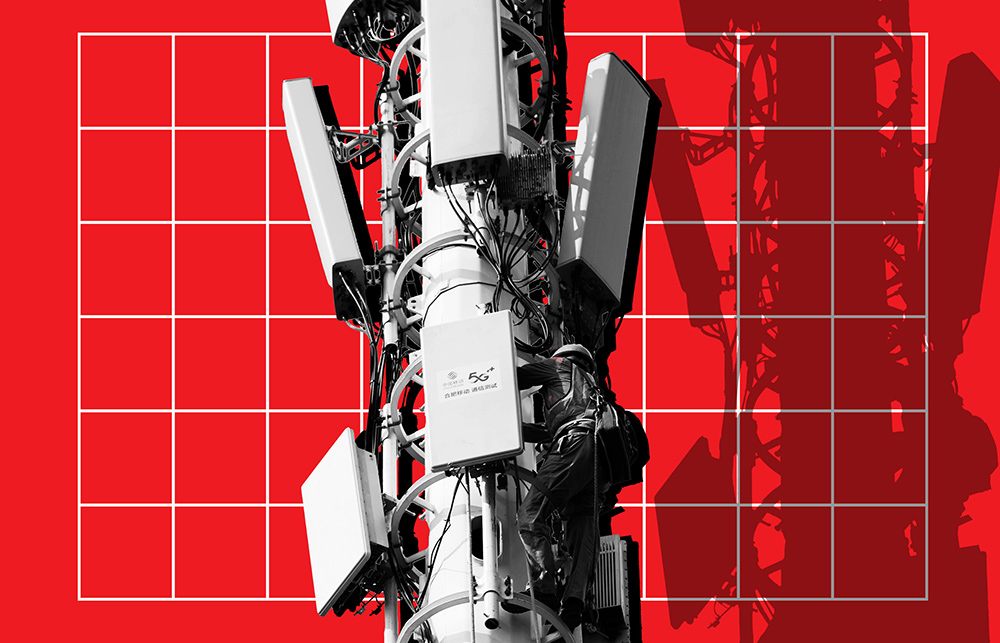
虽然2020年带来的挑战出乎所有人的意料,但近期新兴科技的发展使全世界的企业能够迅速响应,适应未知的领域。无论是虚拟会议还是远程办公,我们看到我们的工作方式和消费者的行为都发生了显著的变化。
流媒体和在线购物的增长以及面对面社交的减少,从个人生活和工作这两个方面,提高了消费者对于可靠、快速的虚拟沟通方式的需求。据估计,美国现有工作人口超过一半目前为远程办公。在疫情期间居家办公的美国工作者中,五分之三更愿意继续远程办公。
消费者工作、社交和消费商品与服务的方式发生转变,正在迫使制造商重新思考如何解决当前最大的消费者痛点:保持网络通畅。
在2020年以前,科技公司投入巨资研发下一代网络技术:5G。这项新技术将给消费者带来许多好处,比如媲美光纤的网速、更可靠的连接、更流畅的流媒体播放和更少缓冲的视频通话等。(摩托罗拉(Motorola)在一年多以前发布了第一款支持5G网络的手机,这款手机使用了高通技术公司(Qualcomm Technologies)的第一款商用5G芯片。随着5G产品的普遍应用,这两家公司将从中受益。)
但那是未来的情景。我们目前的状况如何?
科技公司和其他行业参与者正在全球扩建5G网络。爱立信(Ericsson)的预测称,5G网络的普及速度将明显超过2009年的LTE(4G)。2009年,LTE技术开始成为主流。预计截至2021年底,25%至30%的消费者每周将有数天继续远程办公,我们需要解决的问题是如何帮助更多消费者保持网络通畅?
手机厂商可以推出不同价位的产品,解决当前采用5G技术所面临的障碍,使用户可以连接到所谓的sub-6频段或毫米波频段的5G网络,这意味着用户可以连接到各自市场可用的5G网络。虽然早期的5G智能手机频谱兼容性受限并且售价高昂,但2020年推出的手机将面向广大消费者。
然而,仅靠增加5G设备和拓宽网络,并不足以解决当前消费者对保持网络通畅的需求。科技行业必须开发其他5G应用,影响消费者的日常行为。
一种方式是在全球发展远程医疗。通过5G网络能够以虚拟的方式协助远程问诊和手术,将帮助医疗服务提供商提供患者需要的治疗,同时减少相关成本。有了5G网络,患者还可以配备监控工具,测量重要的生命体征、药物治疗依从性等,让医生能够查看更准确的实时患者信息,从而提供更加个性化的治疗方案。
5G网络还可以为消费者带来日益虚拟化的购物体验。5G网络支持更出色的虚拟现实和增强现实体验。例如,购物者不需要触碰商品或者走出家门,就能够试穿衣服和选择家具。
与4G网络实现GPS跟踪和实时流媒体播放需要时间一样,5G网络还有各种优势有待挖掘。未来仍然有很多工作要做,但我们相信到2020年底,5G网络会在更多的地方普及。到时候,5G技术将在全世界带来大量机会。(财富中文网)
克里斯蒂亚诺•阿蒙为高通总裁。
塞尔吉奥•布尼亚克为摩托罗拉总裁。
译者:Biz
克里斯蒂亚诺•阿蒙与塞尔吉奥•布尼亚克写道,新冠疫情刺激摩托罗拉和高通等公司开始考虑如何普及5G技术。
虽然2020年带来的挑战出乎所有人的意料,但近期新兴科技的发展使全世界的企业能够迅速响应,适应未知的领域。无论是虚拟会议还是远程办公,我们看到我们的工作方式和消费者的行为都发生了显著的变化。
流媒体和在线购物的增长以及面对面社交的减少,从个人生活和工作这两个方面,提高了消费者对于可靠、快速的虚拟沟通方式的需求。据估计,美国现有工作人口超过一半目前为远程办公。在疫情期间居家办公的美国工作者中,五分之三更愿意继续远程办公。
消费者工作、社交和消费商品与服务的方式发生转变,正在迫使制造商重新思考如何解决当前最大的消费者痛点:保持网络通畅。
在2020年以前,科技公司投入巨资研发下一代网络技术:5G。这项新技术将给消费者带来许多好处,比如媲美光纤的网速、更可靠的连接、更流畅的流媒体播放和更少缓冲的视频通话等。(摩托罗拉(Motorola)在一年多以前发布了第一款支持5G网络的手机,这款手机使用了高通技术公司(Qualcomm Technologies)的第一款商用5G芯片。随着5G产品的普遍应用,这两家公司将从中受益。)
但那是未来的情景。我们目前的状况如何?
科技公司和其他行业参与者正在全球扩建5G网络。爱立信(Ericsson)的预测称,5G网络的普及速度将明显超过2009年的LTE(4G)。2009年,LTE技术开始成为主流。预计截至2021年底,25%至30%的消费者每周将有数天继续远程办公,我们需要解决的问题是如何帮助更多消费者保持网络通畅?
手机厂商可以推出不同价位的产品,解决当前采用5G技术所面临的障碍,使用户可以连接到所谓的sub-6频段或毫米波频段的5G网络,这意味着用户可以连接到各自市场可用的5G网络。虽然早期的5G智能手机频谱兼容性受限并且售价高昂,但2020年推出的手机将面向广大消费者。
然而,仅靠增加5G设备和拓宽网络,并不足以解决当前消费者对保持网络通畅的需求。科技行业必须开发其他5G应用,影响消费者的日常行为。
一种方式是在全球发展远程医疗。通过5G网络能够以虚拟的方式协助远程问诊和手术,将帮助医疗服务提供商提供患者需要的治疗,同时减少相关成本。有了5G网络,患者还可以配备监控工具,测量重要的生命体征、药物治疗依从性等,让医生能够查看更准确的实时患者信息,从而提供更加个性化的治疗方案。
5G网络还可以为消费者带来日益虚拟化的购物体验。5G网络支持更出色的虚拟现实和增强现实体验。例如,购物者不需要触碰商品或者走出家门,就能够试穿衣服和选择家具。
与4G网络实现GPS跟踪和实时流媒体播放需要时间一样,5G网络还有各种优势有待挖掘。未来仍然有很多工作要做,但我们相信到2020年底,5G网络会在更多的地方普及。到时候,5G技术将在全世界带来大量机会。(财富中文网)
克里斯蒂亚诺•阿蒙为高通总裁。
塞尔吉奥•布尼亚克为摩托罗拉总裁。
译者:Biz
While 2020 has introduced challenges no one expected, recent advances in emerging tech have enabled companies worldwide to quickly react and adapt in uncharted territory. Whether it involves switching to virtual meetings or managing companies remotely, we’ve seen a distinct change in the way we work, and simultaneously in consumer behavior.
Increased streaming and online shopping and less in-person socializing have led to consumers’ growing need for a reliable and quick way to virtually communicate on both a personal and professional level. In the U.S., it’s estimated that more than half of the current workforce is working remotely—and three in five U.S. workers who have been doing their jobs from home during the pandemic would prefer to continue doing so.
This shift in how consumers are working, socializing, and consuming products and services is forcing manufacturers to rethink how to solve one of today’s biggest consumer pain points: staying connected.
Prior to 2020, companies across the technology industry had been heavily investing in, researching, and developing the next generation of connectivity: 5G. This new technology will provide consumers with several benefits, including connection speeds that are as fast as fiber, more reliable connections, smoother streaming, and video calling with less buffering. (The first 5G-capable phone was introduced by Motorola a little more than a year ago, using the first commercial 5G chipsets from Qualcomm Technologies. Both companies stand to benefit from increased use of 5G products.)
But that’s the future. Where are we today?
Tech companies and industry players are taking part in the expansion of 5G on a global scale. A forecast from Ericsson suggests that 5G subscription uptake will be significantly faster than that of LTE (4G) in 2009, when the technology was first going mainstream. With 25% to 30% of consumers expected to continue to work remotely for multiple days a week by the end of 2021, the question becomes: How are we helping more consumers stay connected?
Mobile manufacturers can address current obstacles to 5G adoption by creating products that span various price points and enable users to connect to so-called sub-6 or mmWave 5G networks—which means they are connected to whatever flavor of 5G technology is available in their respective markets. While early 5G smartphones were offered with constricted spectrum compatibility and premium pricing, those launched in 2020 are reaching a wider consumer base.
However, broadened 5G devices and networks alone won’t solve the current consumer need to stay connected. The technology industry must develop other 5G applications that will impact the everyday consumer.
One way to accomplish that is by opening the doors to telemedicine at a global scale. By virtually assisting remote consultations and surgeries, 5G will help health providers offer remote access to the care that patients need, as well as alleviate some of the associated costs. The 5G network will also equip patients with monitoring tools that measure vital signs, medication adherence, and more, giving doctors a more accurate, real-time look at a patient’s information—and providing for a more personalized care experience.
5G can also help the consumer shopping experience become increasingly virtual. 5G will enable better virtual and augmented reality experiences. For example, shoppers will be able to try on clothing and choose furniture without ever touching the products or leaving their house.
Just as it took time for 4G to enable GPS tracking and real-time streaming, the full swath of 5G’s benefits is yet to be realized. While a lot of work still needs to be done, we’re confident that by the end of 2020, we’ll see 5G reaching more people in more places. Once it does, the opportunities that come from 5G will be global in scale.
Cristiano Amon is president of Qualcomm.
Sergio Buniac is president of Motorola.






